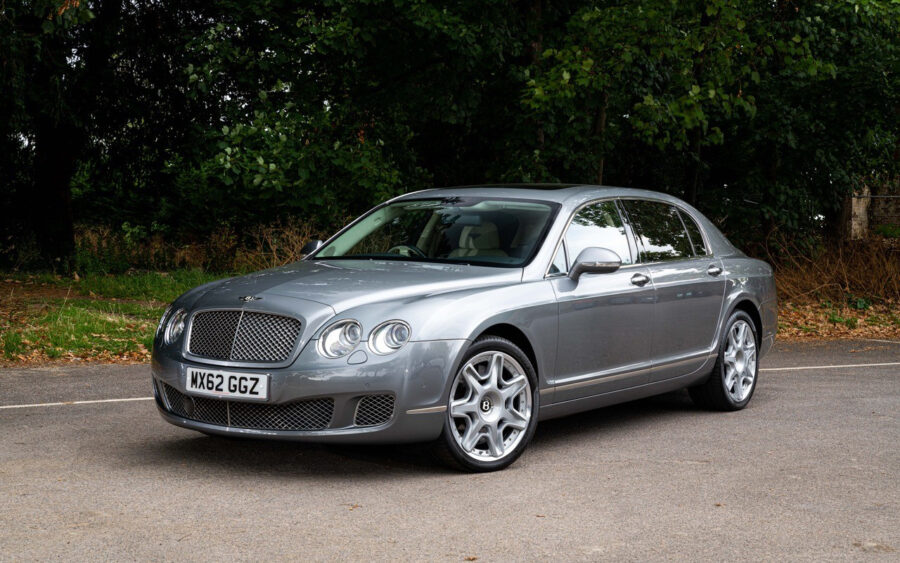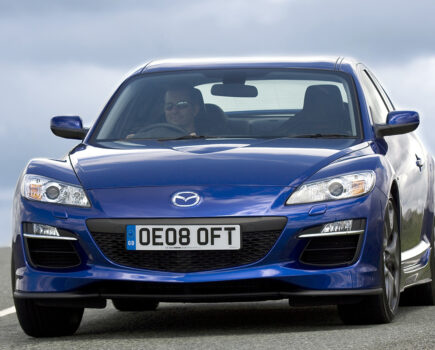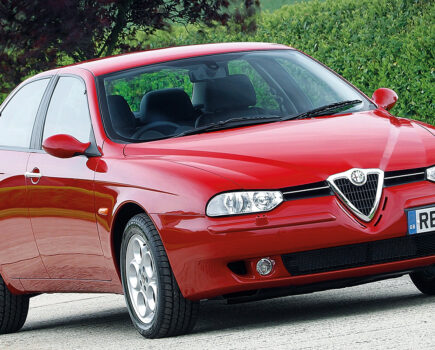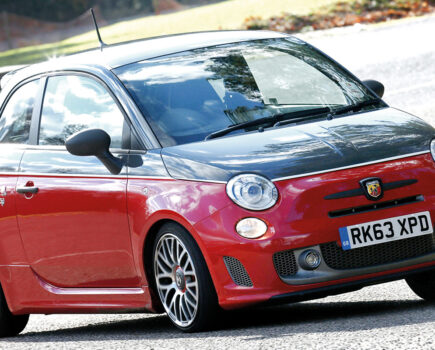Why choose a bland hatchback when the same money offers access to real luxury, space and power? Here are our top prestige buys for hatchback money
Words: Paul Wager
Sponsored editorial in association with Footman James
It’s no secret that recent global events ranging from pandemic to war, set against a backdrop of increasing pressure towards an EV future have sent the car market into a state of near chaos, the result being steadily rising prices of both new and used cars.
By 2022, this meant that the average price of a new hatchback car in the UK had risen to £21,964… a figure which seems frankly a bit too much for an identikit shopping trolley. As anyone who has read this far will no doubt already be aware, that kind of budget buys you a whole lot more on the used market, with the bonus that the notoriously savage depreciation of a brand new car has slowed to a palatable rate… or in some cases already reversed.
We’ve long been a fan of the affordable prestige way of doing things, so we’ve come up with some alternative ways of blowing your humble hatchback budget.
Jaguar XJ (X351)
The Jaguar brand is in something of a limbo at the moment as it awaits its rebirth as an all-electric junior Bentley. Yes, there might be a few F-Paces in a corner of your local JLR dealer but the profits these days definitely come from the ‘LR’ side of the equation and development of new saloon models ended abruptly with the axing of the proposed electric XJ.
In the meantime, the last of the XJ line, known as X351 in Jaguar circles, still cuts a real dash on the street and in its top-spec supercharged V8 versions offers performance right up there with anything carrying an AMG or M badge.
Launched in 2010, the last of the XJs may have boasted up-to-the-minute styling courtesy of incoming Jaguar design boss Ian Callum but under the skin shared much of its architecture – notably the lightweight aluminium construction – with the traditionally styled previous model.
This meant a kerb weight of just 1755kg for the five-metre long car which made it a featherweight in the class and ensured good performance. Many regard the XJ as being a better drive than the contemporary XF and certainly it’s a credible driver’s car to rival the best of the German offerings.

At launch, the engine range included the 275PS 3-litre PSA-derived V6 diesel and the 5-litre AJ-V8 engine in 385PS normally aspirated or 503bhp supercharged form. From 2013 the car was offered in 542PS supercharged V8 form as the XJR, alongside the 340PS supercharged 3-litre petrol V6. In 2017. the 575PS XJR 575 was added to the range.
Facelifted in 2015, the X351 model ended production in 2019 and in summer 2023 our average hatchback budget is enough to secure a 2016 diesel model with mileage around the 50,000 mark, most of them with a really high spec.
Perhaps more enticing though is the supercharged petrol V6, available at the same money and looking sharp in the R-Sport spec which offers great performance and looks to rival the XJR.
If it’s the full fat XJR you want then nothing else will do but you’ll need to lift the budget closer to £30,000. Proof if any were needed that the last of the XJs still commands a really strong following among the Jaguar faithful.
Mercedes GL & GLS
In any list of affordable prestige buys there’s usually at least one Range Rover which makes an appearance but Stuttgart’s own attempt at doing the same thing makes an appealingly left-field choice.
In the confused age of the DaimlerChrysler tie-up, the focus was on finding new niches to fill and the success of the ML showcased very neatly the possibility for a similar vehicle positioned a rung higher. Accordingly, the ‘X164’ GL-Class was born, itself based on the underpinnings of the five-seater ML but offering greater off-road ability and a third row of seats.
The GL-Class was much more than simply a stretched M-Class though, with Mercedes’ original press material making much of its off-road ability and even namechecking the original G-Wagen, its full name of Gëlandewagen cited as the source of the ‘GL’ badging.
The drivetrain was beefed up from the M-Class, gaining uprated axles complete with full rear and centre differential locks, while the ML’s coil-springs were replaced by Mercedes’s Airmatic air, modified to provide a fording depth of 600mm
The X164 was unveiled in 2006, the range initially limited to the V6 320CDI rated at 221bhp, the twin-turbo V8 420CDI good for 302bhp and the sole petrol offering being the 383bhp 5-litre V8 which cracked the 60mph sprint in just 6.5 seconds. Like modern Range Rovers, there was no manual option, all models using Mercedes’ 7G-Tronic torque converter automatic.
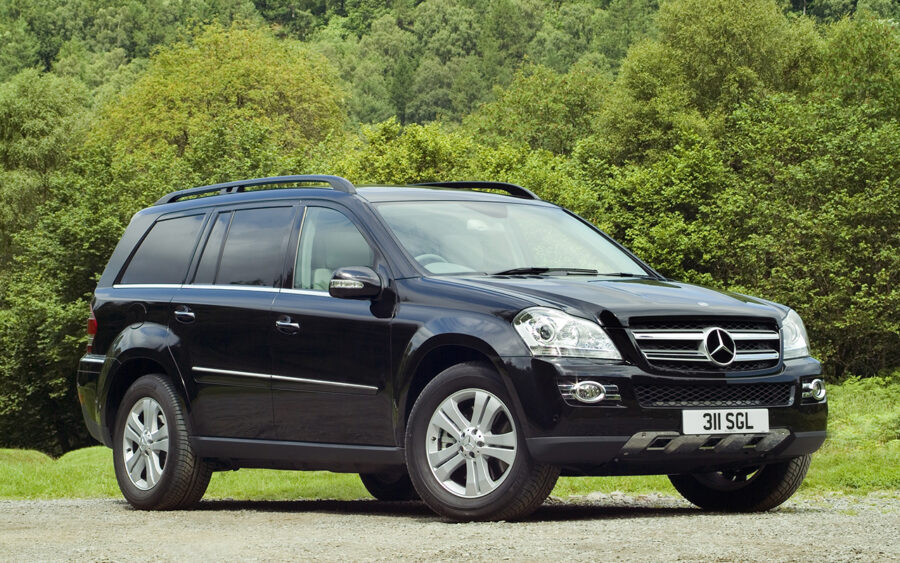
A facelift in 2009 saw the range rejigged, retaining the GL500, but the diesels revised to become GL350CDI and GL450CDI, both now employing Mercedes’ BlueTec SCR technology. A second-generation model was introduced in 2013, with a new model code X166 signifying that this was an all-new design.
Taller, wider and longer than the original GL, the new car managed to be 100kg lighter, reflecting the fact that in standard specification it was less about going off the beaten track and more about cruising in lofty comfort. Buyers of the X166 generation wanting the 306mm ground clearance of the older model had to cough up £1000 for the Off-Road Engineering package which added back the low-range transfer box, diff locks and underbody protection.
The new model arrived in the UK in 2013 and initially we got just the two models: the 208bhp 350CDI BlueTec diesel offered only in AMG Sport trim, which was paired with the full-fat AMG experience in the GL63AMG, packing a 5.5-litre petrol V8, 537bhp and a £91,000 price tag. Unsurprisingly, the bulk of sales were the 258bhp 350CDI, with Mercedes marketing boasting that the GL remained the sole offering in the European premium full-sized segment to offer seven seats.
That two-model line-up endured through the facelift in 2016 at which point the five-metre long behemoth was renamed GLS – explained by Mercedes as ‘GL meets S-Class’. The new name ushered in a nine-speed auto, named logically enough 9G-Tronic, while the Airmatic suspension could be paired with an optional dynamic damping system. The outside was facelifted to the current Mercedes corporate front end, while bumper and rear lights were restyled and the dashboard was revised.
The GLS has endured despite Mercedes joining the rush to electrification and rather gloriously if inappropriately, the big 2.4-tonne SUV doesn’t even hint at green washing: hybrids are conspicuous by their absence and the current line-up spans GLS 400d, GLS 600 Maybach and the GLS 63 AMG.
Today the early GL is yours for £7000, but ‘average hatchback’ money buys into something rather smarter in the shape of a tidy 2016 GL350CDI diesel with around 70,000 miles showing. The same budget also buys the petrol V8 but you’ll struggle to find one – at the time of writing in Summer 2023 we found just one for sale.
If it’s the GLS Class you want, then you’ll need to lift the budget to the £27,000 mark, but again petrols are almost non-existent.
Aston Martin DB9
The Jaguar-based DB7 may have outsold Aston’s entire back catalogue but its kit car build quality, questionable dynamics and notoriously fragile V12 engine did nothing for the brand’s reputation. All of which explains why the company wanted to put some clear distance between it and the next car to wear the DB badge which was launched not as DB8 but DB9.
In the market in which Aston Martin operated, nothing less than a brand new platform would do, which was duly developed as the ‘VH’, a bonded and riveted aluminium design broadly following the principles of the Lotus Elise which could be scaled for different models while also reducing production costs.
Styling was by Henrik Fisker, his intention being to reduce the number of visible shutlines to give an impression that the body had been milled from a billet of aluminium. External detailing was kept to a minimum, with bumpers hidden behind the bodywork and even the number plate mounting part of the structure. One thing which was carried over from the DB7 was the V12 engine, although now manufactured in Cologne, these units having a better reputation for reliability.
New camshafts, manifolds and crankshaft saved a useful 11.8kg and power inched up to 450bhp at 6000rpm backed up by hefty torque of 420lb.ft at 5000rpm, with 80 per cent of that available at just 1500rpm.

Perhaps the major difference between the firmly traditional DB7’s layout and the DB9 was the adoption of a ‘transaxle’ layout, employing a rear-mounted gearbox with the drive passing through an alloy torque tube in the style of the front-engined Porsches. Naturally, Aston Martin trumpeted a 50/50 weight distribution from the arrangement and it certainly made the car better balanced than the nose-heavy DB7.
Transmission options were a six-speed torque converter automatic by ZF, or a six-speed manual using Graziano internals inside Aston Martin’s own casing.
The DB9 was launched in April 2004, with a Volante convertible following in May 2005. Minor revisions were made in July 2007, with a more major revision in July 2008, when the V12 was uprated to 470bhp and 443lb.ft, with a restyled centre console but the exterior remaining unchanged.
The car was facelifted for the 2013 model year, with a new front-end design giving it the corporate nose style shared with the 2011 Virage. LED light strips, enlarged headlights and an integrated rear spoiler were also featured.
The 2013 facelift also brought a further power uplift to a serious 510bhp and 457lb.ft. DB9 production ended in 2016, with the car replaced by the DB11, using another all-new platform.
Despite the usual savage depreciation at this end of the market, you’ll still need to stretch that hatchback money for a DB9, with the cheapest examples hovering around the £23,000 mark. Move up to £25,000 though and you have enough choice to seek out a respectable example – and remember, buy on condition and maintenance history with these cars and Google the phrase ‘Aston V12 tick’ before you part with any cash…
Bentley Continental GT & Flying Spur
Even people vehemently opposed to the idea of German owned British brands would have to grudgingly admit that VW’s ownership of Bentley has revitalised the brand beyond all expectations while retaining its character in a way that rival BMW has signally failed to achieve with MINI or Rolls-Royce.
The first of the all-new Bentleys was the Continental GT which appeared in 2003 and suddenly explained the existence of the VW Phaeton – the overgrown Passat until that point considered Ferdinand Piëch’s greatest folly. Sharing its D1 platform and W12 engine, the Bentley added twin turbochargers and four-wheel drive, plus styling neatly evocative of the R-Type Continental of the 1950s. Although a costly proposition, it was also around half the price of the outgoing Continental model which enabled Bentley to raise production from under 1000 in 2002 to more than 7000 in 2004.
In 2005, the Continental GT was joined by a four-door derivative, the Continental Flying Spur. Mechanically identical to the GT, it shared the two-door car’s frontal appearance but lost the distinctive feline rear haunches to accommodate rear doors.
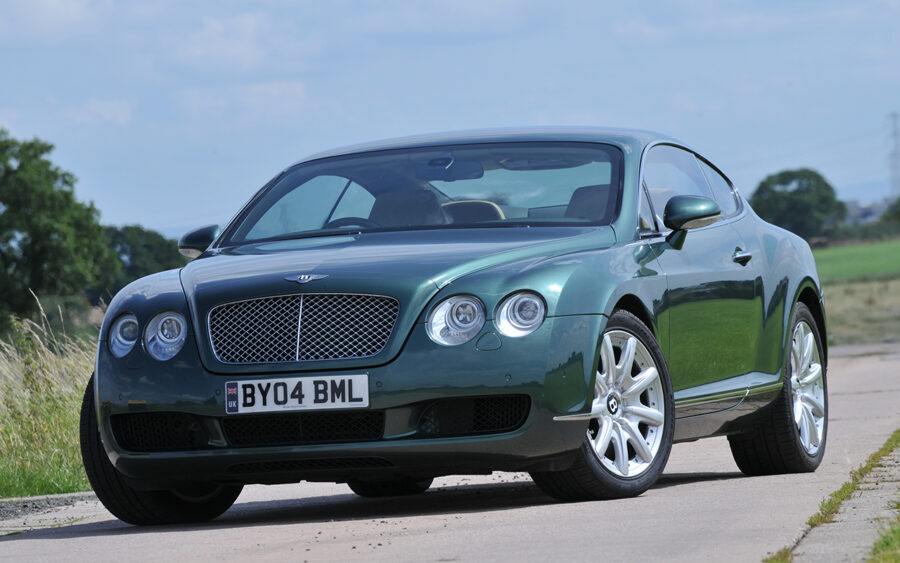
The Continental would morph into a second generation in 2011, effectively a heavily facelifted version of the original and in 2012 the W12 engine was joined by a more conventional – and cleaner – V8. An all-new third generation would arrive in 2018 which is still in production, but for hatchback money it’s the original ‘3W’ model you’re looking at.
And it’s here that there’s a tricky decision to make: the two-door Continental GT is the more stylish car but at this end of the market, many of them have led quite a hard life and are festooned with aftermarket styling bling as well as hiding costly issues: for example, boost issues on the early cars can be an engine-out job, a thermostat is £900 and replacing the water pump requires dismantling the entire front end. The four-door Continental Flying Spur has generally had a more gentle life and is perhaps the better choice for a first dip of a cautious toe into the Bentley world.
A miley Spur starts at just £13,000 but unless you have workshop facilities on hand, spend that full £21,964 budget and go for a nicely presented 2008 car with mileage around the 60,000 mark and a bulging folder of history. At this price level, many cars will also have the Mulliner-spec features like the diamond quilted leather which make the interior look less dated.
BMW 6 Series (F13)
When BMW decided to revive the 6 Series name in 2003 after a 14-year absence, enthusiasts took their time to warm to the style of the E63 replacement, one of BMW’s early efforts under design boss Chris Bangle alongside the Z4 and the fourth-generation E65 7-Series.
By contrast, the third generation 6 Series introduced in 2011 under the F12 (convertible) and F13 (coupe) codes was a much more conventional looking car, essentially a coupe version of the 5 Series. Except that confusingly it was also offered in four-door form as the 6-Series Gran Coupe which essentially offered a more rakish alternative to the 5-Series. Think Passat CC and you get the idea.
Despite being available in three different body styles, the 6 Series was limited to three engine options: the 315bhp 3-litre turbo six badged 640i, plus the grunty twin-turbo 4.4-litre V8 producing 402bhp and later 444bhp in the 650i or 553bhp in the M6 and a twin-turbo straight-six diesel good for 308bhp and 465lb.ft.
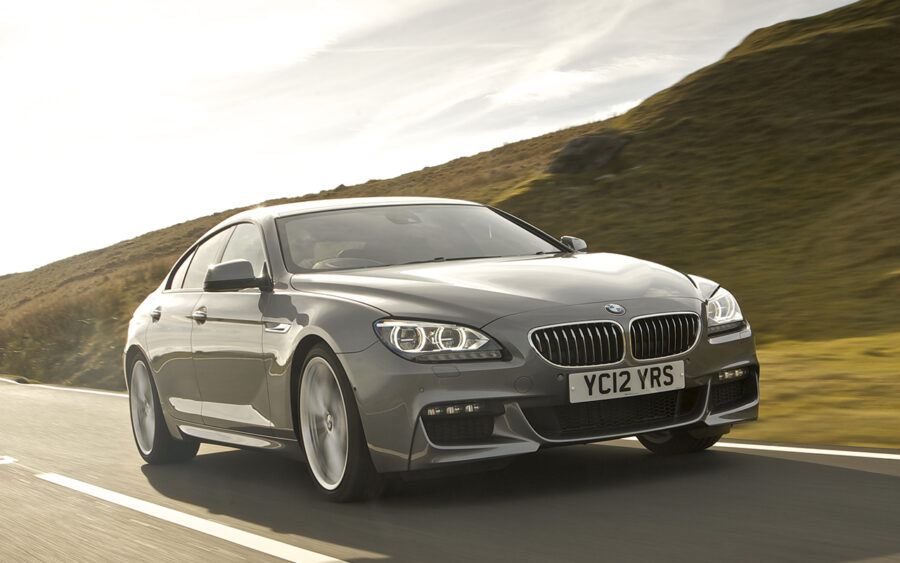
As with most modern BMWs, the 6 Series was offered only in two-pedal form, the regular models getting an eight-speed automatic and the M6 using BMW’s own seven-speed dual-clutch ‘DCT’ transmission.
The 6-Series nameplate would transfer to the ‘G32’ generation from 2017, but this was in fact a hatchback version of the 5 Series, meaning that the spirit of the 6 Series was carried on in the reborn ‘G15’ 8 Series from 2018. Anyone else yearn for the days when the simple 3-5-7 BMW range was easily understood?
Like so many cars at this price level, the choice at the £21,964 budget mostly consists of the 640d in M Sport trim showing around 50,000 miles and broadly split on body style. If you really want a petrol, they do exist but will take more searching out… and if you’re up for the hunt, the lure of the 650i M Sport for hatchback money is hard to resist.
Maserati Ghibli
Maserati must have one of the most tortured histories of any car maker, having changed hands no less than seven times, owners including Citroën, PSA, De Tomaso, Fiat and now Ferrari.
The product range reflected the firm’s turbulent finances until setting down in the Fiat era with the launch of cars like the 3200GT and the fifth-generation Quattroporte which abandoned the wacky styling and oddball engineering of the BiTurbo era to position the brand as an aspirational Alfa Romeo and a more accessible Ferrari.
In 2013, Maserati took another step closer to the mainstream with the launch of the Ghibli, a sports saloon with more compact dimensions than the Quattroporte – to continue the Jaguar analogy, a kind of Italian XF with very similar engine options: a 3-litre V6 turbodiesel, 3-litre V6 twin turbo petrol and 3.8-litre turbo V8, later complemented by a 2-litre turbo four-pot hybrid.
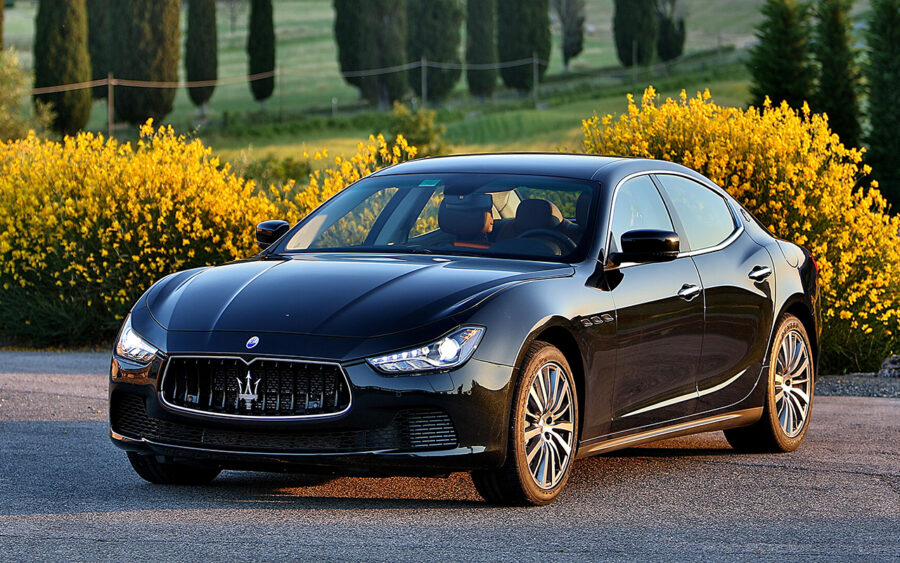
Although a relatively rare sight in the UK, the Ghibli has clocked up well over 100,000 units which by Maserati standards makes it a runaway success and in European markets it’s a viable alternative to the likes of the 5-Series and E-Class.
Its price makes it similarly viable as an alternative to the stuffy German prestige offerings too. Writing this in the summer of 2023, we found a surprisingly high number of Ghiblis for sale, starting at just over £12,000. For your £21,964 you’re looking at a 2017-2018 car with candidates split almost equally between diesel and petrol. Curiously, many of them will be well under the 50,000-mile mark which is either a welcome bonus or a warning alarm bell depending on how deep your love of Italian cars runs.
Audi A7
If even the modern Maseratis feel like they’re just much of a gamble, then Audi can supply a saloon with enough style to rival the Ghibli or even its bigger brother the Quattroporte in the shape of the A7.
Essentially a sleeker version of the A6, the A7 is a neat if unadventurous car in most commonly-spotted variants but with the addition of the ‘S’ to its name it becomes altogether more interesting courtesy of the twin-turbo 4-litre V8.
Rated at 414bhp and 406lbf.ft, the quattro drivetrain fires the S7 to 60mph in just 4.7 seconds and it was highly rated by road testers who reckoned it to be a more engaging drive than previous fast Audis of the modern era.
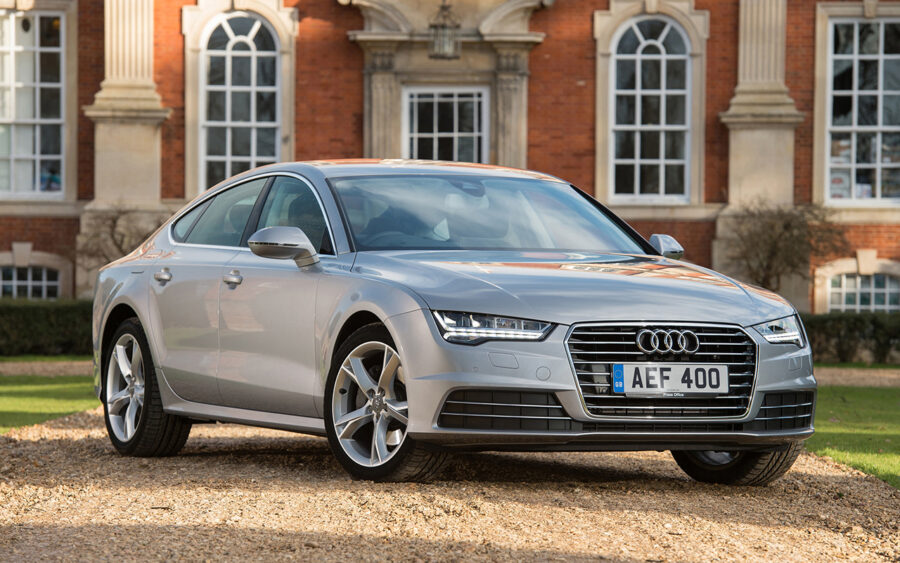
The A7 and S7 were revised into a second generation from 2018 but the budget here restricts us to the earlier cars. That’s no hardship though, since there are plenty of respectable 2016/2017 candidates on offer for around the £22,000 mark, most with sensible sub-70k mileage.
Yes, you need to do your due diligence when buying any performance car of this level but Audi’s legendarily solid construction should justify its selection over even the best-preserved example of the Maserati.
Range Rover (L405)
Many will have watched Harry Metcalfe’s film on ‘peak Range Rover’ in which fellow enthusiast Jeremy Clarkson confesses to having lost track of Range Rover code names after the L322 generation they celebrate.
Its successor is in fact the L405 which was the first Range Rover for a great many years to have been an original Land Rover development from start to finish, without relying on outside powertrain suppliers or being interrupted by changes in company ownership.
Launched in 2012, it wasn’t the first Range Rover to employ a monocoque construction but it was the first to use a lightweight aluminium platform courtesy of technology developed by sister brand Jaguar and first seen on the X350 generation of XJ back in 2002. The result was that the big Rangie tipped the scales at just over two tonnes – heavy, yes but nothing like the colossal 2.5 tonnes of the older Discovery 3.
The sleek styling reflected the high-tech underpinnings, with a new AC6000 alloy being developed to permit tighter feature lines and the style cleverly incorporating traditional Range Rover signatures like the clamshell bonnet but in an altogether sleeker, less agricultural shape with a pronounced taper towards the rear.
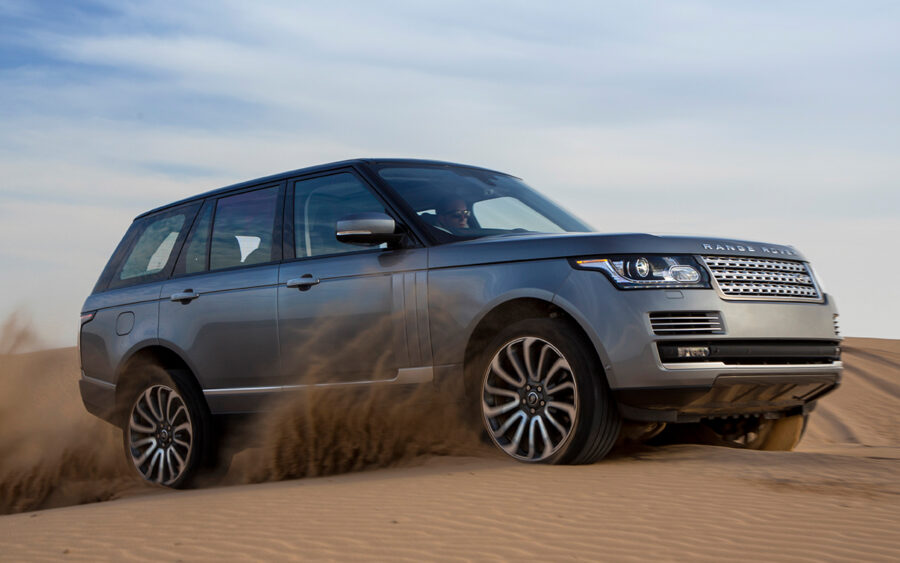
Detailing was kept deliberately simple and the result was an elegant vehicle which was imposing yet thoroughly modern and still looks fresh today. Indeed, a late model L405 can easily be confused at a glance with the later L460 model which replaced it in 2022.
At launch, engines included the 5-litre Jaguar V8 in either 375PS or supercharged 510PS trim and two diesel options: the 258PS 3-litre V6 shared with the Jaguar XF/XJ and the Ford-supplied 339PS 4.4-litre V8.
In 2014 a supercharged petrol V6 was added in either 340PS or 380PS spec and from 2019 a plug-in hybrid option was offered, using a 2-litre Ingenium four-cylinder petrol engine paired with a 116PS electric motor for a total 404PS. The supercharged V8 gained power through the years, uprated to 525PS from 2017 and in SV Autobiography form to 550PS from 2015 and then 565PS from 2017. A diesel hybrid was also offer, using the 340PS V6 paired with a 35KW electric motor for a total of 340PS.
There’s nothing quite like a Range Rover and the L405 still looks like a much more expensive proposition than it really is: in July 2023, we found an enticing selection at the £22,000 mark where your money buys you a 2015 V8 diesel with mileage usefully under the 100k mark.
Petrol models were never strong sellers in the UK market, with the handful you’ll find on offer today generally needing an uplift in budget to the £25,000 level.
Porsche Panamera
In a feature which also lists the Range Rover and Lexus RX, you might expect us to call upon the Cayenne as the Porsche candidate, or maybe take the obvious route with the 911 or Cayman but there’s another option you may not have realised has dropped within reach of the buyer with a hatchback budget: the Panamera.
A rather better resolved attempt at creating a four-door Porsche than the awkward 911 nose grafted on to the VW Touareg which created the Frankenstein Cayenne, the Panamera is a really striking piece of work. Low slung and perfectly proportioned, it’s also a pure Porsche – unbelievably, the wider VW Group didn’t make use of the Panamera platform under a big Audi or Bentley model until the second-generation car arrived in 2016.
The engine range was a mix of V6 and V8s: a 3.6-litre petrol V6 rated at 300bhp or a 4.8-litre V8 rated at 400PS in the 4S, 430PS in the GTS and in twin-turbo form 500PS in the Turbo or 550PS thanks to bigger turbos in the Turbo S. The sole diesel offering was a 3-litre V6 rated at 250bhp but offering 406lb.ft torque which was usefully more than all except the twin-turbo V8.
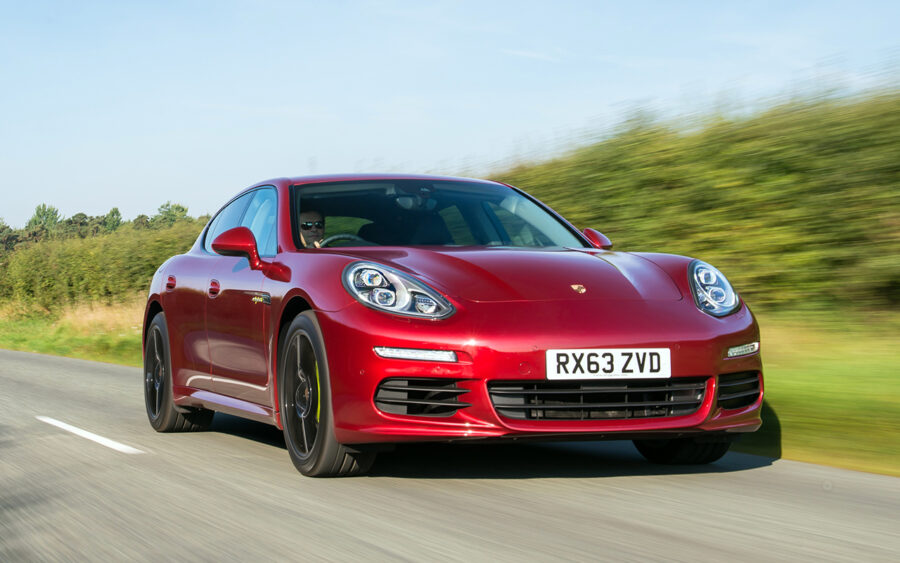
A tiny number of manuals were produced, meaning that for all practical purposes the Panamera is auto-only, using an eight-speed torque converter box in the basic models and Porsche’s PDK dual-clutch box in the 4, 4S and Turbo.
So what does your money get you? Something surprisingly agreeable it would appear, with your £21,964 enough to secure a 2010 V8S with the PDK box and just 75,000 miles. Settle for a few more miles on the clock and the same money gets you into the four-wheel drive 4S or Turbo S.
Lexus RX
Quite possibly the only reason we even have a Jaguar and Range Rover in this list is that the arrival of Toyota’s aspirational Lexus brand in Europe shocked the British brands into raising their game massively to ensure their survival.
Lexus meanwhile never quite became the dominant force in the UK market some feared it would become, but its seamless quality ensured a consistent following, especially when the range was broadened to include an SUV with green credentials which gave it a neat USP as a more socially acceptable alternative to the Range Rover.
The first RX model arrived in 2005 but the money which buys you the average hatchback also buys you the 2015-on fourth generation car which paired a 3.5-litre petrol V6 with a hybrid system to generate a total output of 313PS.

The hybrid Lexus SUV had become an accepted part of the premium car buying landscape and as a result the new car gained length and width to focus on providing class-competitive interior space against the likes of the BMW X5 and Volvo XC90.
The few criticisms had been taken on board too, chiefly the lifeless steering which was sharpened up alongside suspension revisions which improved its dynamic character but preserved the ride quality for which the RX had become known.
By this point the RX with its low CO2 and 30mpg economy was a very credible alternative to big, thirty diesel SUVs, but a massive Achilles’ Heel remained: it was only a five-seater. In 2017 this was remedied with the introduction of the RX450h L offering a three-row configuration.
Today your hatchback budget buys you a 2016 car with mileage around the 70,000 mark and really not much else to say: they’re all petrol-engined, they all use a CVT automatic and squeaks and rattles are simply not to be tolerated.
Sponsored by Footman James Insurance
At Footman James we know that classic vehicles are so much more than the nuts and bolts that keep it together or the engine that keeps the wheels turning – they’re a lifestyle, a time capsule of cherished memories and an absolute labour of love.
Our classic vehicle insurance policy comes complete with a whole host of benefits such as shows & events cover and cover for your trips to Europe (up to 35 days, restrictions apply). But we also understand that owners are as unique as they vehicles they need to insure, which is why we created FJ+.
FJ+ is a host of additional options you can choose from to tailor your policy to your exact requirements. These include: Breakdown Cover provided by the RAC, Agreed Value, Nil Deduction Salvage Retention, Legal Protection and more.
So whether you have a classic vehicle, a combination of classic and modern vehicles or a multi-million pound collection – we have an insurance policy to suit your requirements.
Visit our website for an instant quotation or to request a call back

